Farmhouse sinks, also known as apron-front sinks, are a popular focal point in modern kitchens. These deep, spacious sinks create an attractive design statement while providing functionality. Below, we discuss choosing a farmhouse sink style, installation tips, and maintenance requirements.
Farmhouse Sink Overview
Here are some farmhouse sink basics to help start your search.
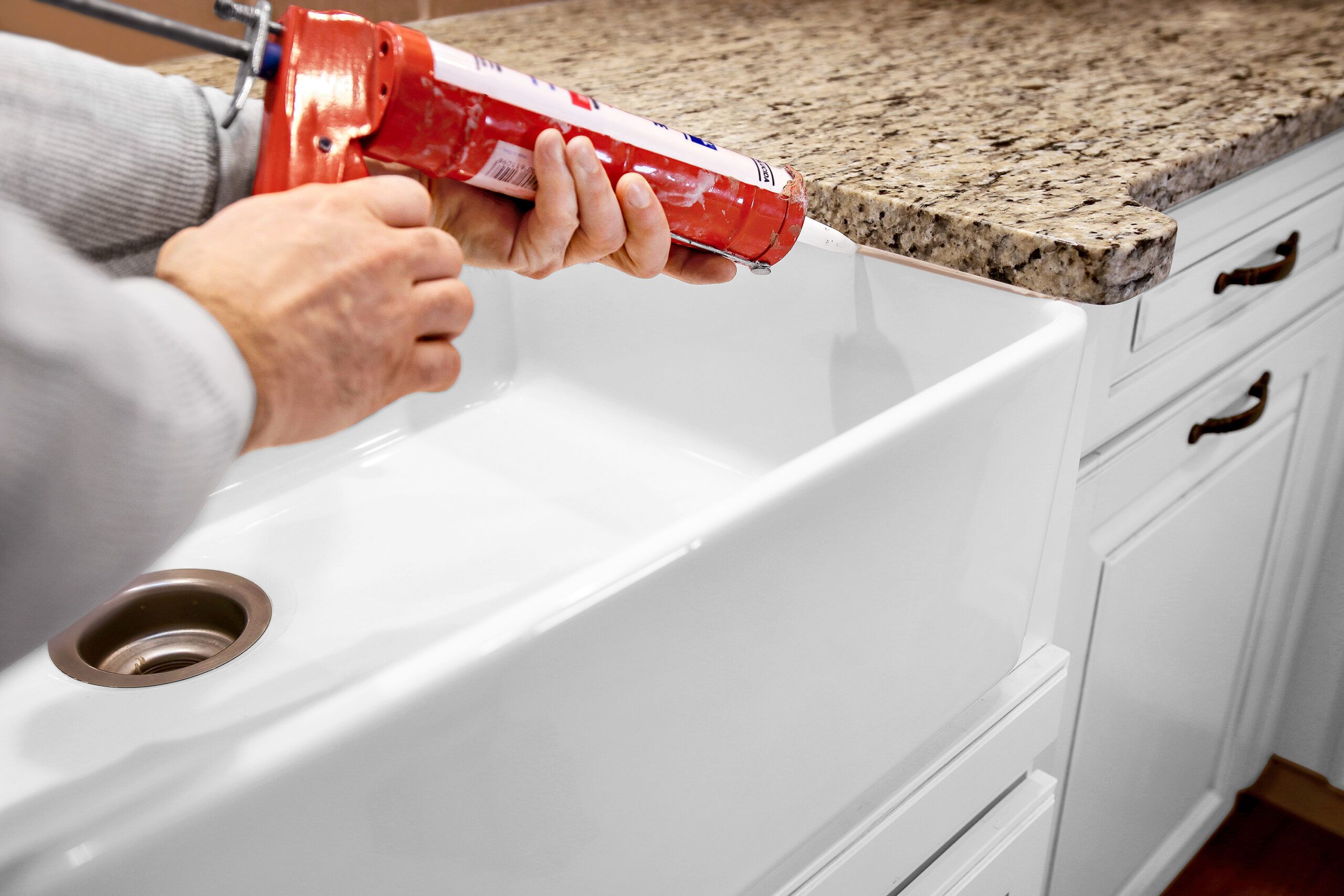
What Do Farmhouse Sinks Cost?
Stainless steel and ceramic farmhouse sinks start at around $250 according to models listed on the Home Depot site, but expect to pay at least a few hundred dollars to get exactly what you’re looking for. Those made from pricier materials such as fireclay and cast iron often sell for well over $1,500. The cost will vary depending on size, brand, material, and additional features.
Do Farmhouse Sinks Require a Special Cabinet?
While not always necessary, most existing cabinets will require additional support to accommodate a farmhouse sink. These sinks typically measure 20–42 inches wide and 7–10 inches deep, with weights ranging from 100–200 pounds. We recommend consulting a professional or being diligent in ensuring the cabinet structure is fit to handle the weight.
Can You DIY Farmhouse Sink Installation?
Installing a farmhouse sink often involves cutting the cabinet front, reinforcing the structure, and coordinating the sink, cabinet, countertop, and faucet installation. For most homeowners, hiring an experienced professional is best to ensure proper installation and avoid potential issues. Mistakes during installation may lead to costly plumping or countertop repairs down the road.
Are Farmhouse Sinks Hard to Keep Clean?
Fireclay and enameled cast iron sinks generally require only mild cleansers for routine maintenance. Follow the manufacturer’s guidelines to maintain the warranty and preserve the sink’s appearance.
Popular Farmhouse Sinks Types
There are three common farmhouse sink styles: drop-in, undermount, and pulled forward. Here’s a little bit about each to see which may work best for your counter.
Drop-In Sinks
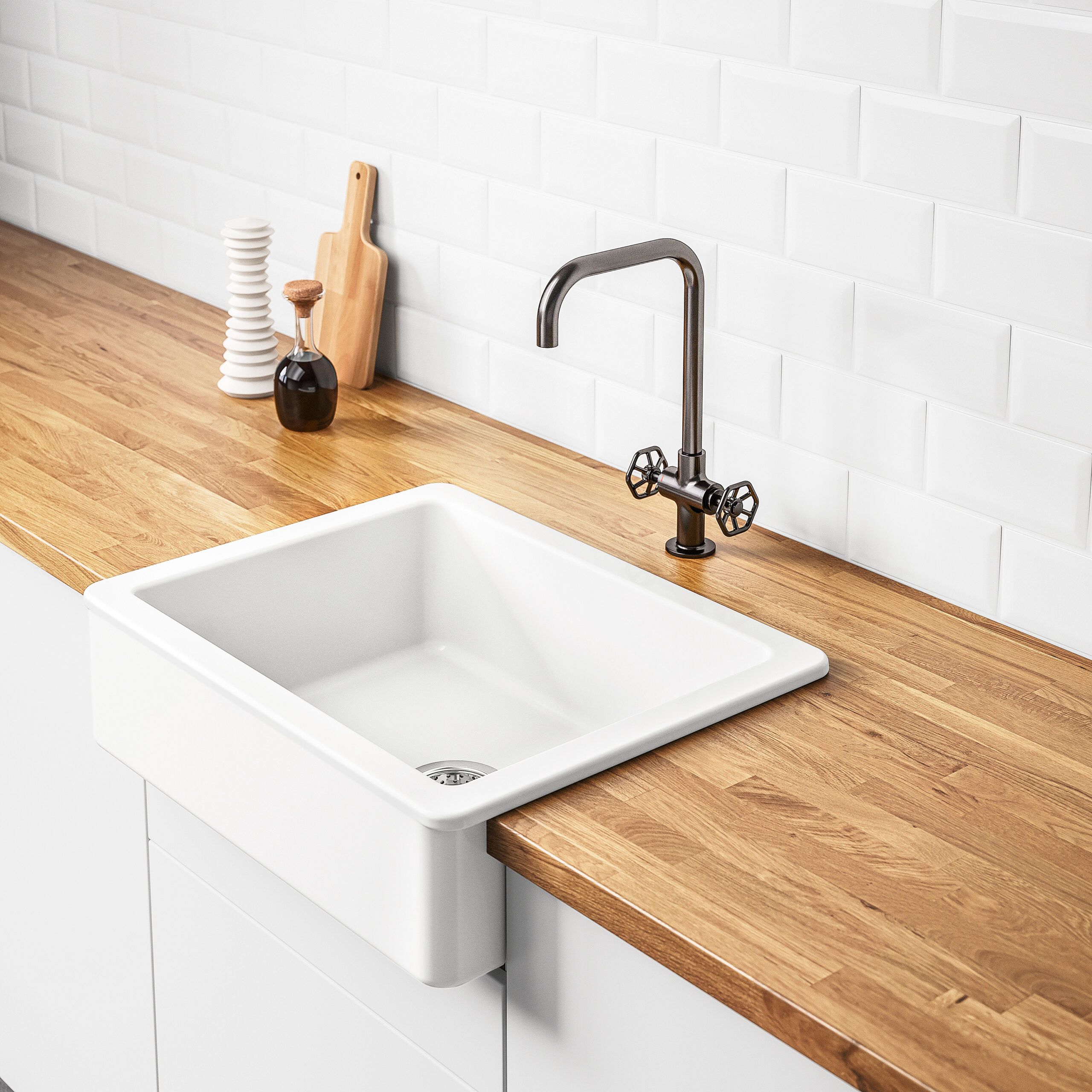
Drop-in farmhouse sinks work well with many countertop materials. These sinks have a finished lip that sits on top of the countertop cutout, making them particularly suitable for wood or laminate surfaces. Drop-in sinks can be easier to install compared to undermount models, making them a more DIY-friendly option.
When selecting a drop-in farmhouse sink, keep the following in mind:
- Choose a sink depth that feels comfortable for your height and usage needs.
- Ensure your countertop is at least 1 inch thick to support the sink properly.
- Look for models that include a metal support bar for added stability.
Undermount Sinks
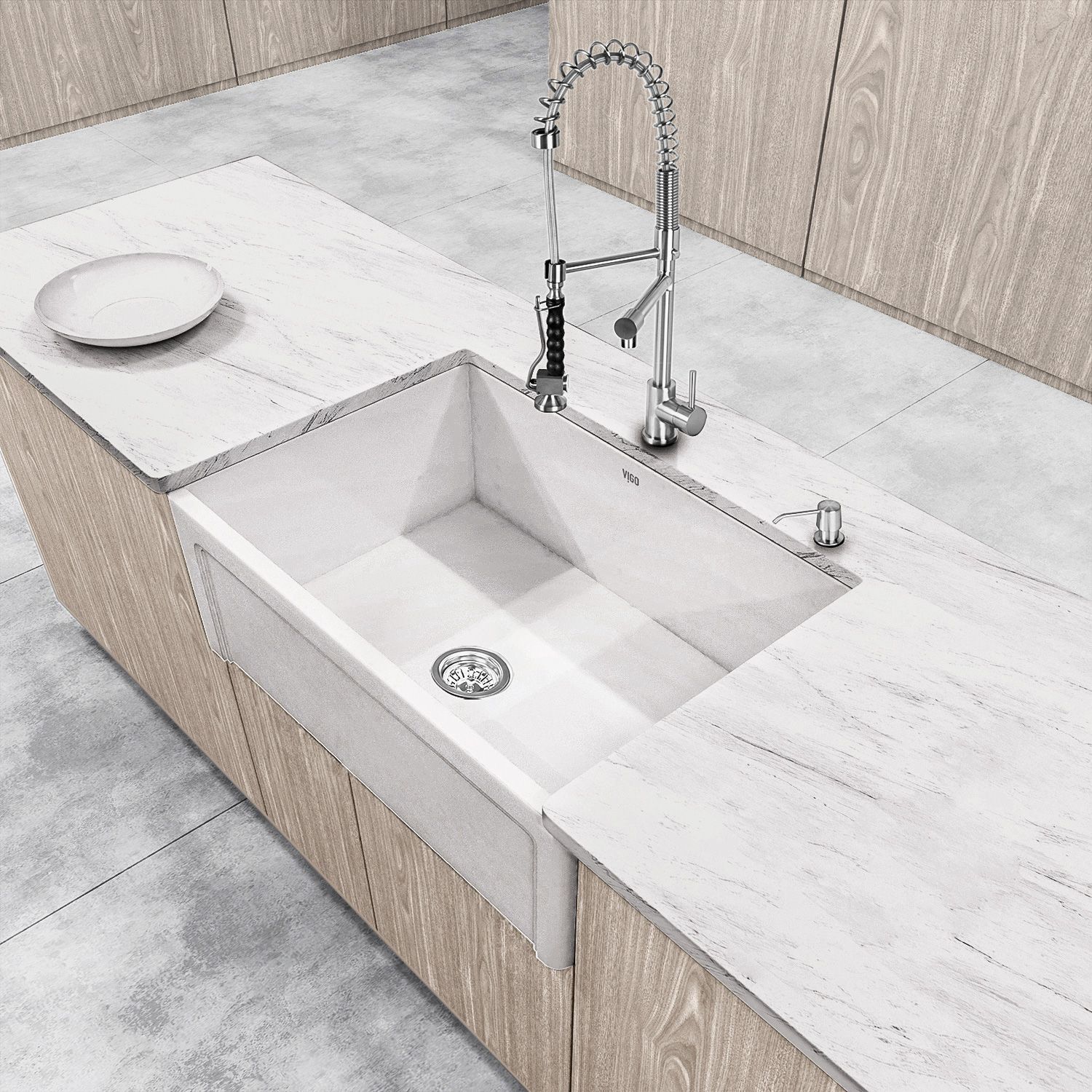
Undermount farmhouse sinks have a sleek, integrated look that allows for easy countertop cleanup. These sinks are designed to be mounted beneath the countertop, creating a seamless transition between the work surface and the basin so you can sweep crumbs and other countertop messes right into the sink.
Pulled Forward Sinks
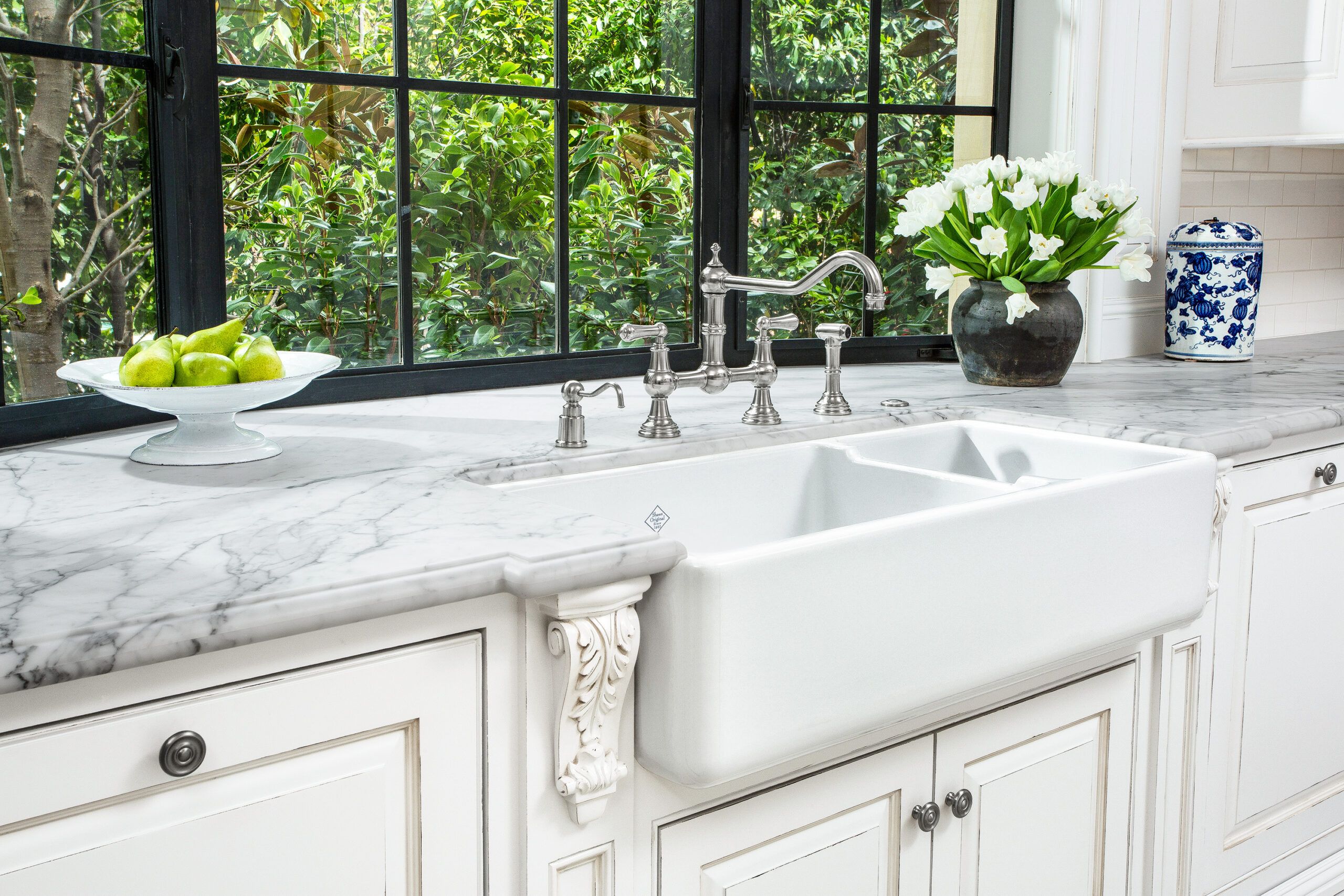
Pulled-forward farmhouse sinks make a bold statement in the kitchen, with their prominent apron fronts extending beyond the cabinet line. The forward position reduces the need to lean over the countertop during sink use, which is more comfortable for your back. The extended front also allows for a deeper basin, accommodating larger items.
Know Before You Buy
Here are some buying tips to help you choose the right sink style.
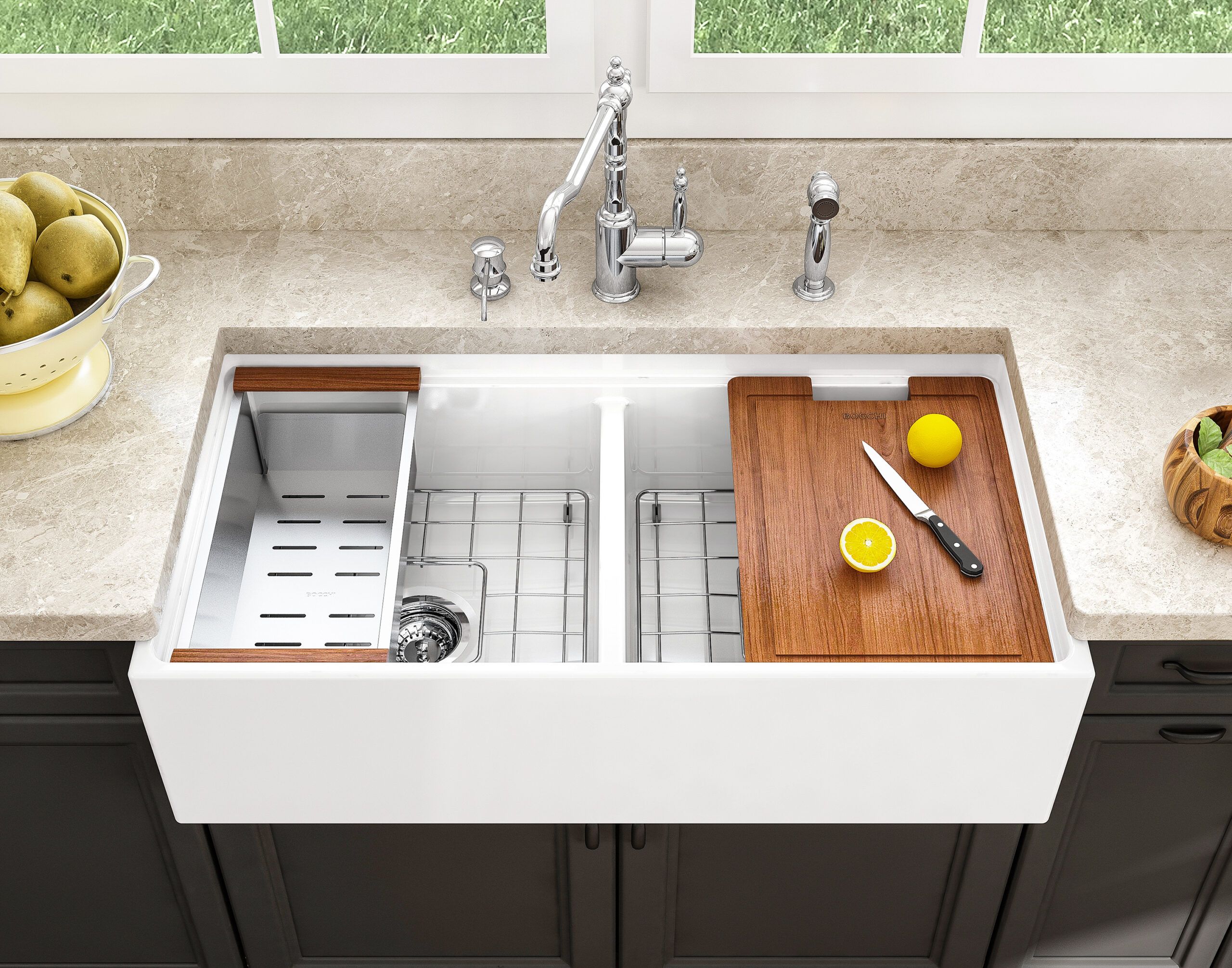
- Material variations: Fireclay and enameled cast iron have superior durability and chip resistance compared to lower-fired ceramics or solid-surface acrylics. However, these premium materials often come with a higher price tag.
- Single or double bowl: Single-bowl sinks provide ample space for large items, while double-bowl designs offer versatility for multitasking. Consider a low divider to accommodate pot handles in double-bowl models.
- Workstation features: Some farmhouse sinks include a step-down rim that allows for accessories such as cutting boards or dish drainers, enhancing functionality. These features can turn your sink into a multipurpose workstation and streamline kitchen activities.
- Faucet compatibility: Ensure your chosen faucet complements the sink’s design and functionality. Pull-down faucets are popular for their ability to reach all corners of the basin.
- Drain placement: Side-positioned drains allow for dish stacking without blocking water flow. The positioning of the drain can impact how efficiently the water drains, especially when the sink is filled with dishes.
- Protective accessories: Some sinks accommodate accessories that prevent scratching and help maintain the sink’s appearance.
Downsized Sinks for Smaller Spaces
Beyond common sizes and styles, there are also smaller farmhouse sink variations for outside the kitchen. Smaller versions are common in butler’s pantries, mudrooms, and laundry rooms for convenient cleanup.
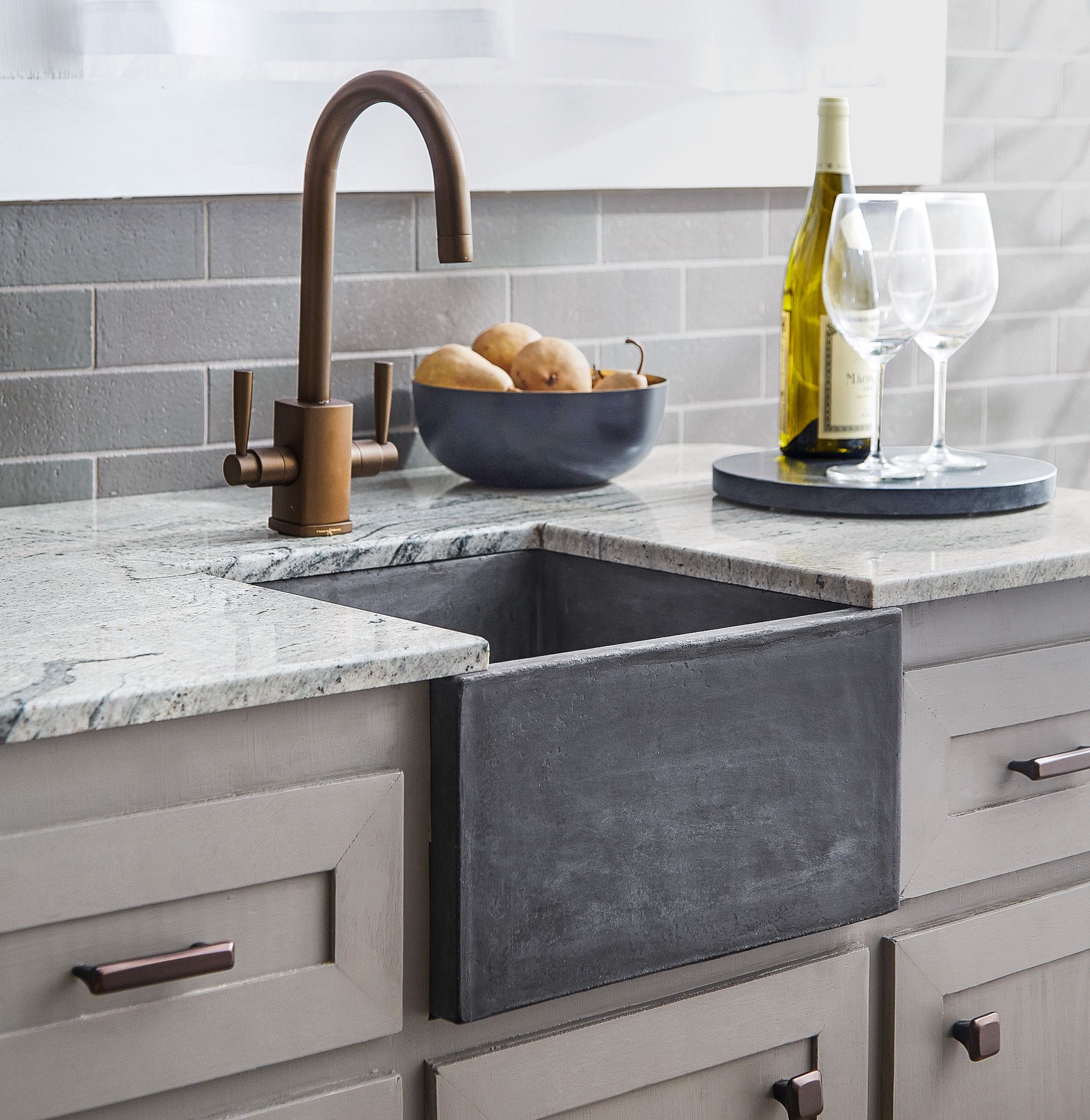
- Bars: A small apron-front sink adds a touch of elegance to home bars while providing a convenient spot for washing glasses and mixing drinks.
- Bathroom vanities: A 20-inch farmhouse sink can serve as a statement piece in a bathroom, providing ample space for hand-washing without taking up too much counter space.
- Custom applications: Smaller farmhouse sinks can also be used in custom areas like craft rooms or hobby centers.
- Islands: Incorporate a downsized farmhouse sink into a kitchen island for additional workspace and versatility.
- Laundry rooms: A deep, farmhouse-style sink is ideal for hand-washing delicate items or pretreating stains.
- Mudrooms: Install a small farmhouse sink in a mudroom for easy cleanup after outdoor activities.
- Pantries: A compact farmhouse sink can work as a prep station or cleanup area in a walk-in pantry.
- Utility spaces: Small farmhouse sinks may be used in utility rooms for a functional yet stylish touch.
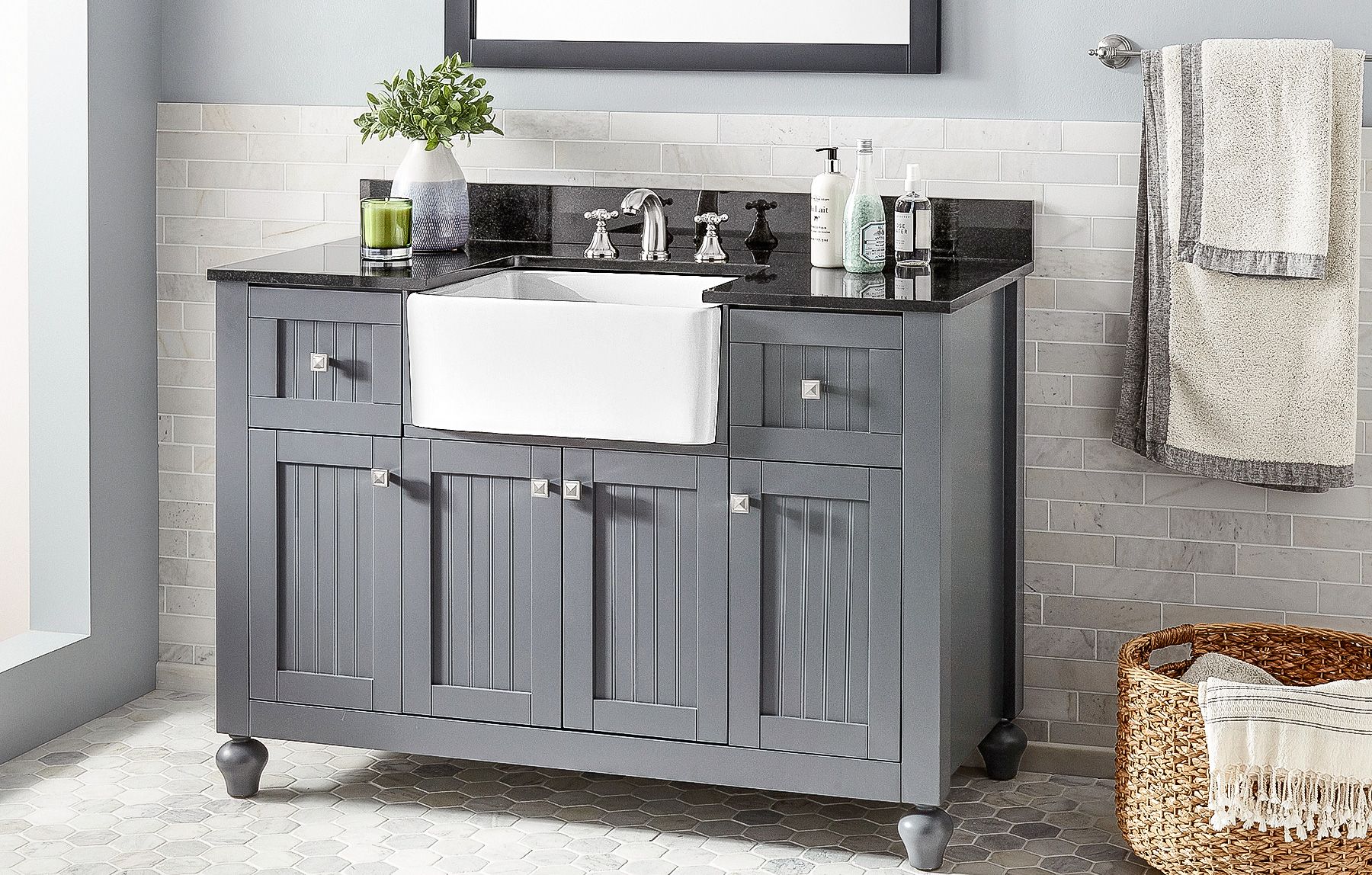
Farmhouse Sink Installation
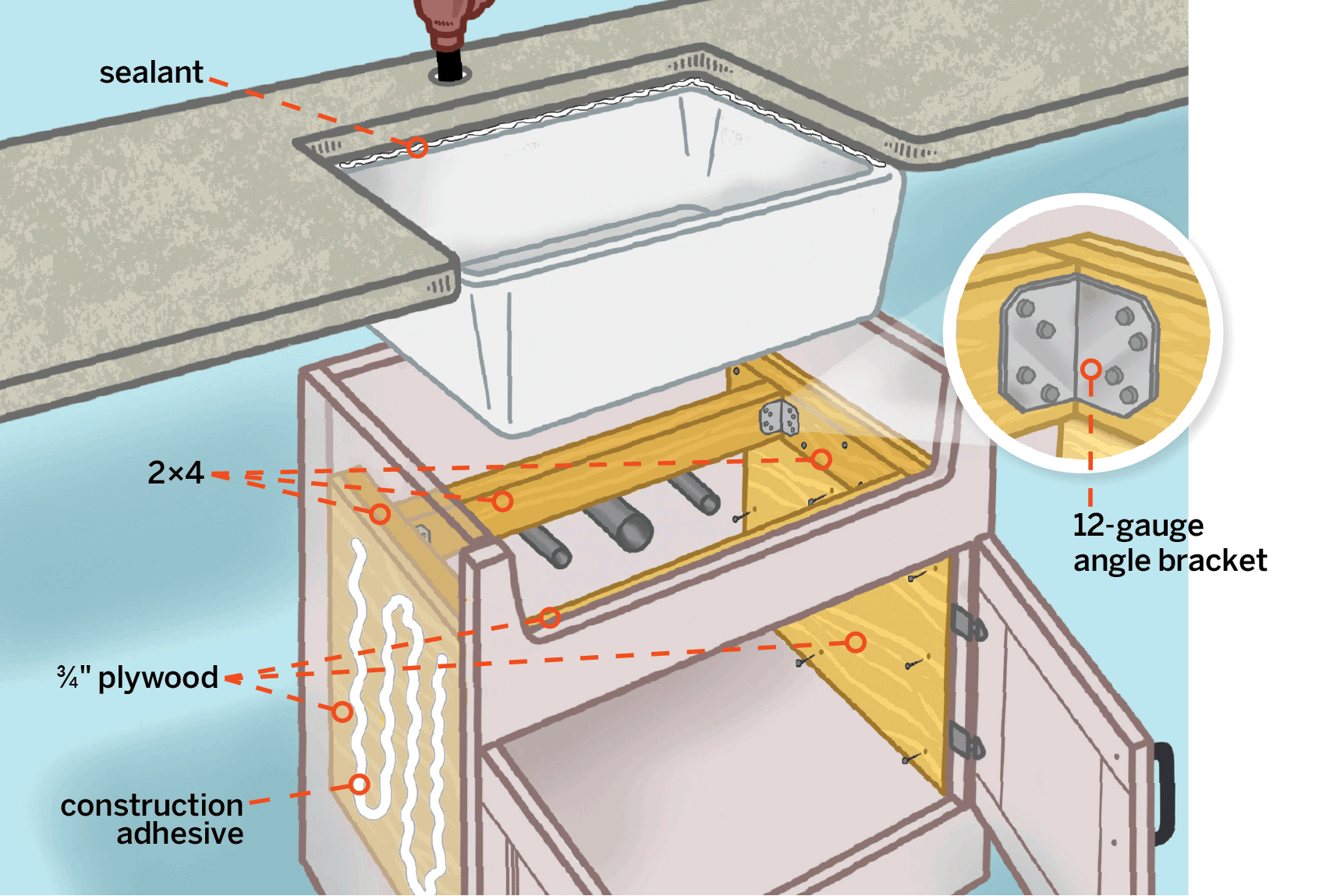
The biggest mistake homeowners make when installing a farmhouse sink is not accounting for the sink’s true size and weight, especially when filled. A 36-inch cabinet may not hold a 36-inch sink, and its upper portion may not be tall enough to fit an undermount’s apron. Decide on the sink first, then order the cabinet and have professionals cut the opening on-site. In most cases, the cabinet is likely to need shoring up, as shown above.
Reinforcements
Large fireclay and cast-iron sinks can tip the scales at 200 pounds or more. Add a garbage disposal, gallons of dishwater, and heavy pots and pans, and a farmhouse sink’s sole support—its base cabinet—may be holding up twice the sink’s shipping weight. Here’s how This Old House general contractor Tom Silva readies a cabinet to hold one of these heavyweights:
- Reinforce the sides and front with 3/4-inch plywood. Attach each piece with construction adhesive and flathead wood screws.
- Attach 2-by-4s to the plywood. Glue and screw the cleats 1/8-inch below the sink’s vertical depth. Always measure the sink itself. Its actual measurements can vary slightly from what’s printed on the spec sheet.
- Mount a 2-by-4 crosspiece to support the sink’s back edge, clear of the drain. Use steel angle brackets to carry the load to the cleats.
- Scribe and cut out the cabinet front to match the sink’s apron.
- Position the sink. Shim it in place until the rim is level and 1/16-inch below the top edge of the cabinet.
- Close the gap. After the countertop goes in, run a bead of tub-and-tile sealant around the sink rim to keep water out.
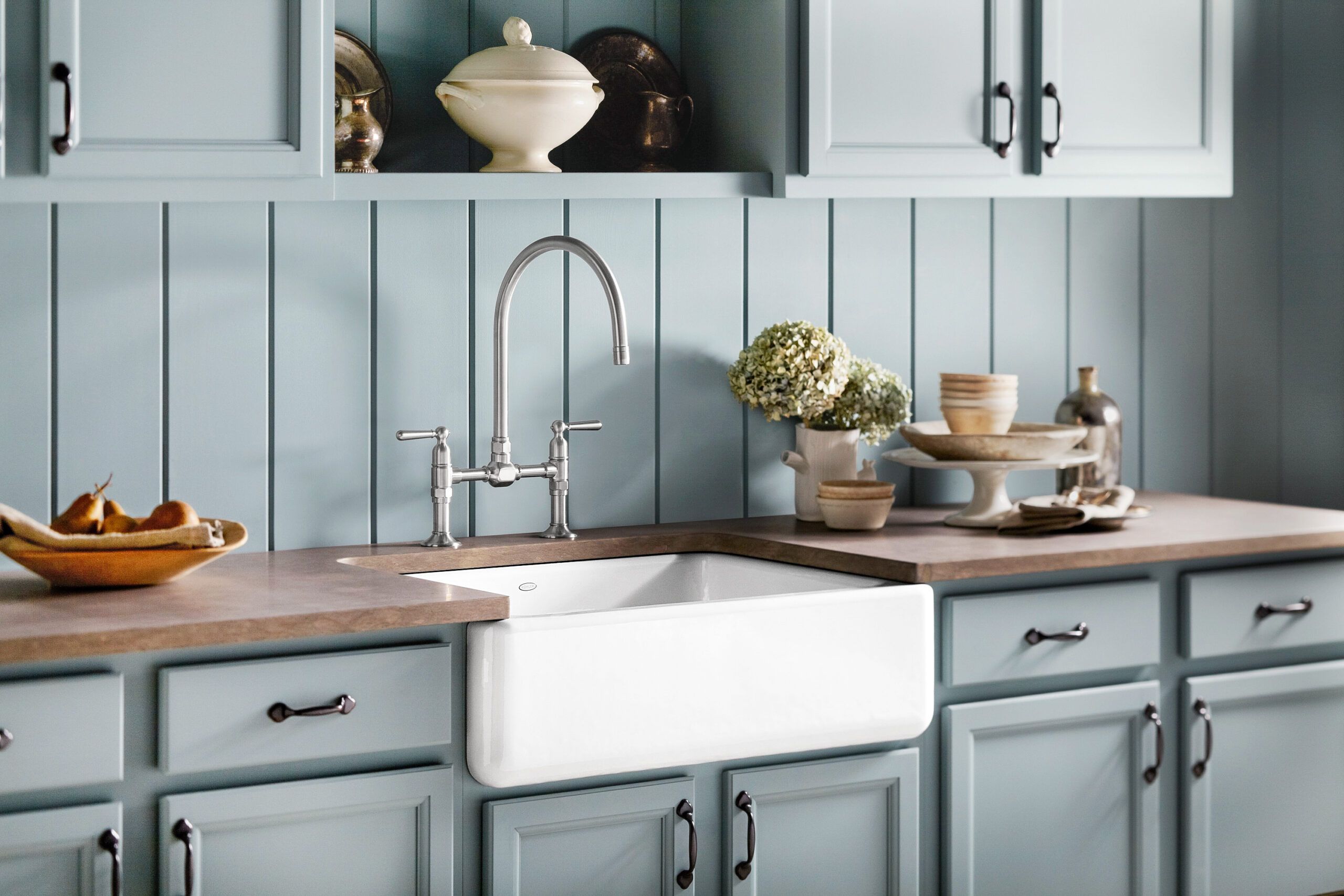
Common Sink Materials
Let’s review popular popular sink materials and their unique characteristics.
Cast Iron
- A thick layer of enamel is baked onto the cast iron, creating a glossy, chip-resistant surface.
- While white is classic, cast iron sinks are available in various colors to suit different design schemes.
- Many cast iron sinks come with lifetime warranties against chips, cracks, and burns.
- The sturdy construction ensures that your sink will endure heavy use over time.
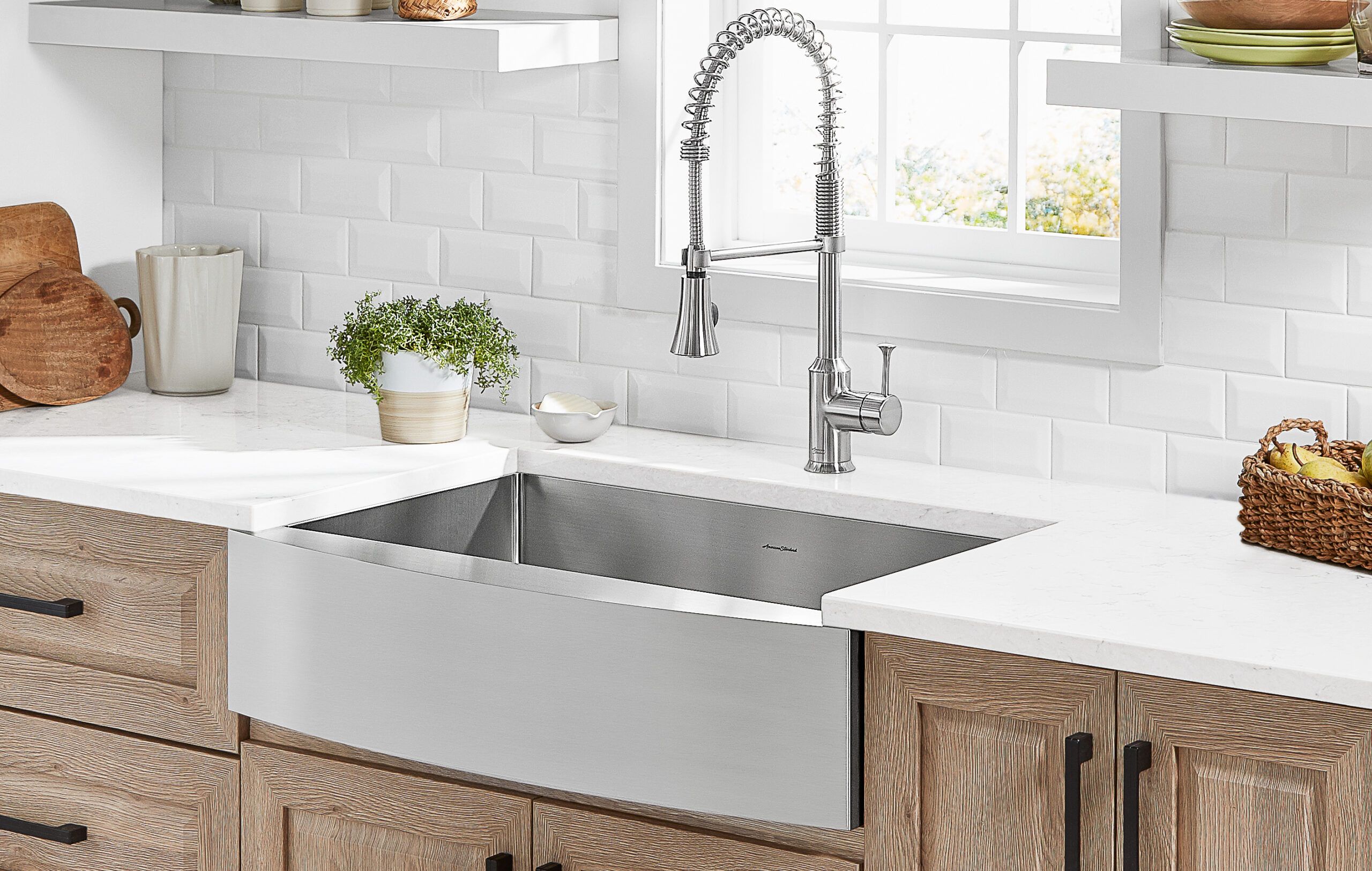
Stainless Steel
- High-quality stainless steel resists scratches, stains, and corrosion.
- Steel can be formed into crisp lines and tight corners for a contemporary look.
- Stainless steel sinks are generally lighter than cast iron or fireclay.
- Stainless steel is easy to clean and maintain, making it a popular choice for busy kitchens.
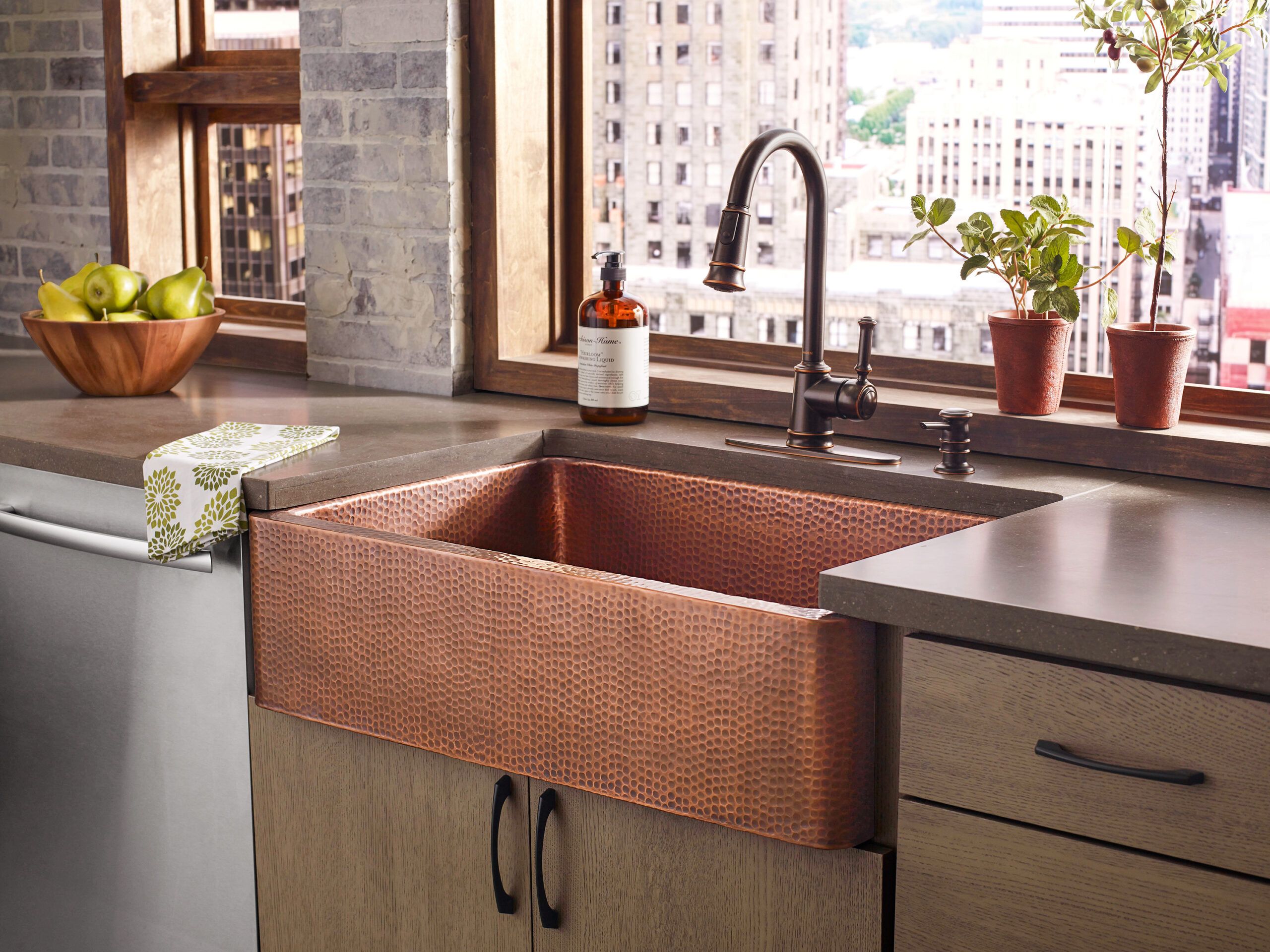
Copper
- Unsealed copper will naturally darken over time, creating a unique, lived-in look.
- Copper has natural antimicrobial qualities, making it a hygienic choice for kitchen sinks.
- Choose between smooth, bright finishes or hand-hammered, antiqued looks.
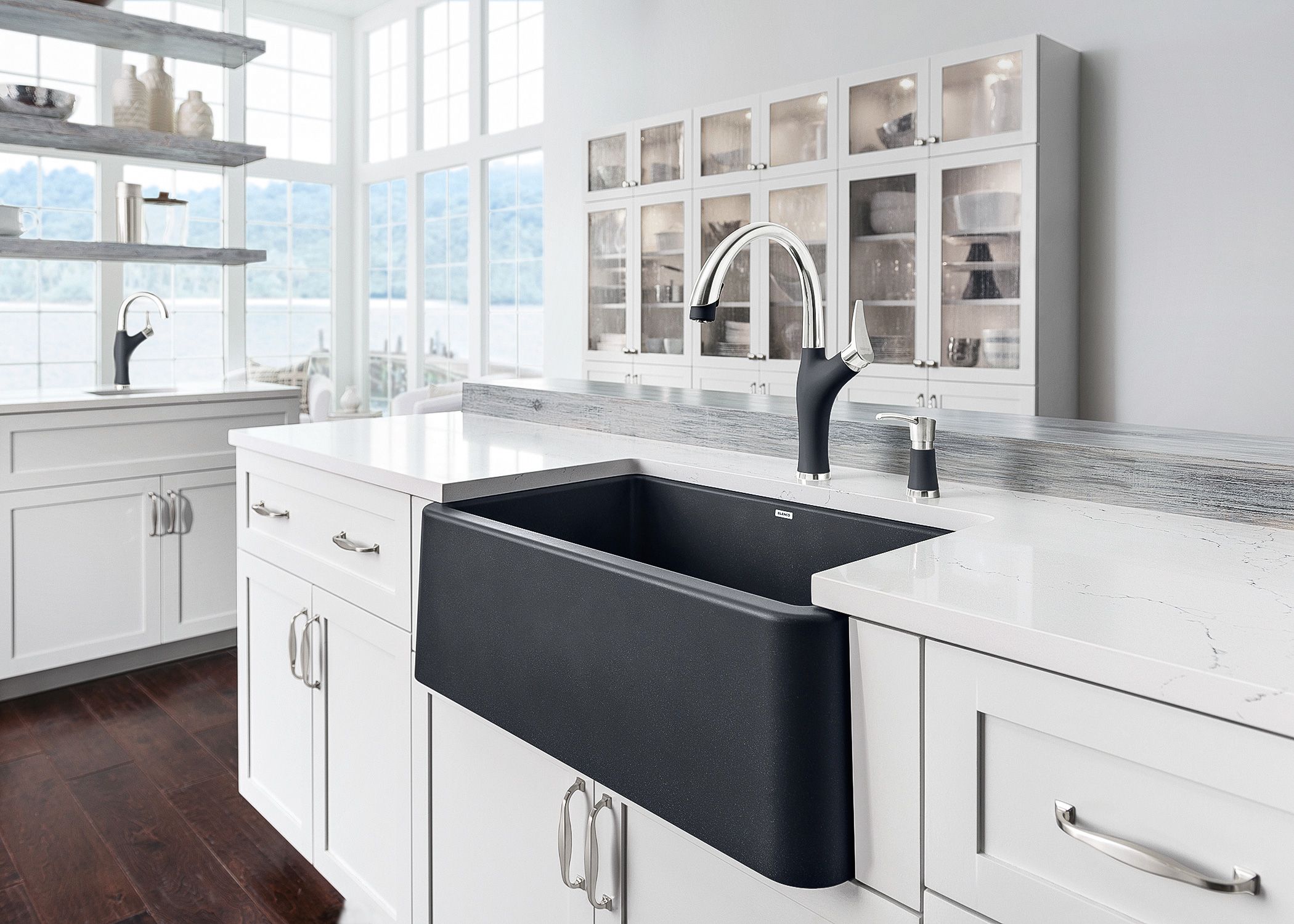
Composite
- The combination of crushed stone and resin creates a tough, resilient surface.
- Composite sinks maintain their color throughout the material, making minor scratches less noticeable.
- Many composite sinks can withstand high temperatures without damage.
- Available in a variety of colors, composite sinks can match or complement any kitchen design.

Concrete
- Concrete sinks can be tinted or textured to achieve specific design goals.
- Proper sealing is essential to protect concrete sinks from stains and etching.
- When properly maintained, concrete sinks are highly durable.
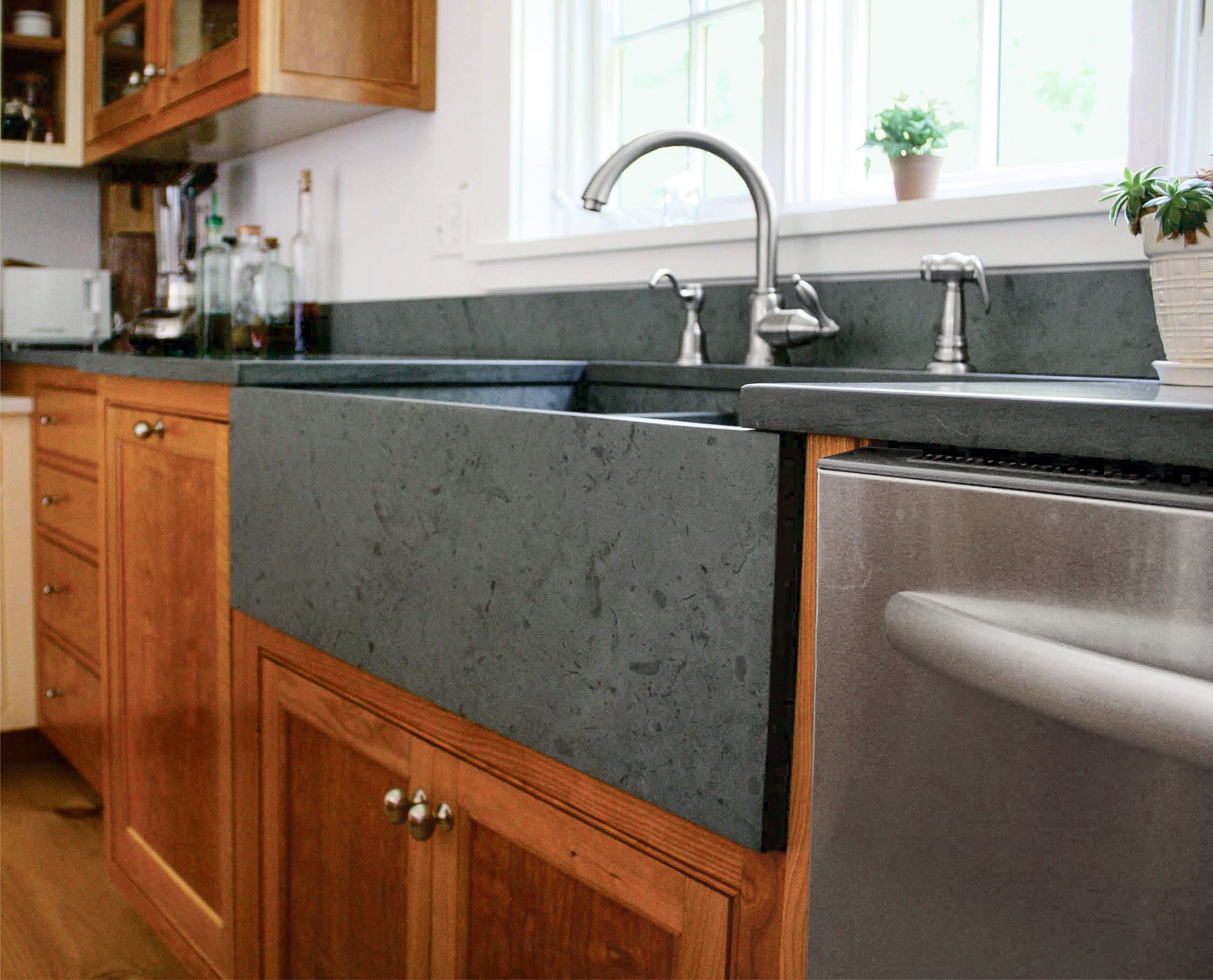
Stone
Natural stone farmhouse sinks come in the following options:
- Marble: While requiring more care, marble sinks provide a luxurious look and can be integrated seamlessly with marble countertops.
- Slate: Known for its durability and low maintenance requirements, slate sinks are available in various colors.
- Soapstone: This nonporous stone is stain-resistant and easily maintained with periodic oiling.
